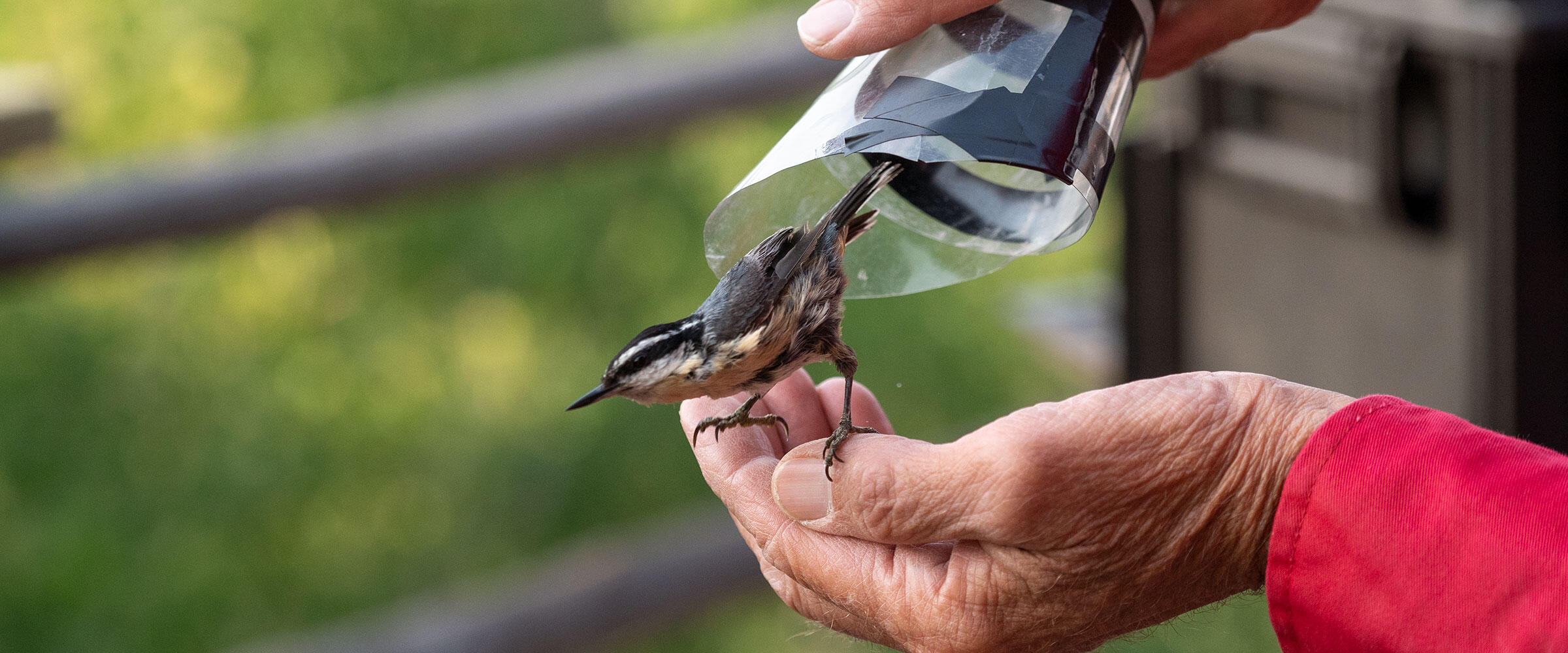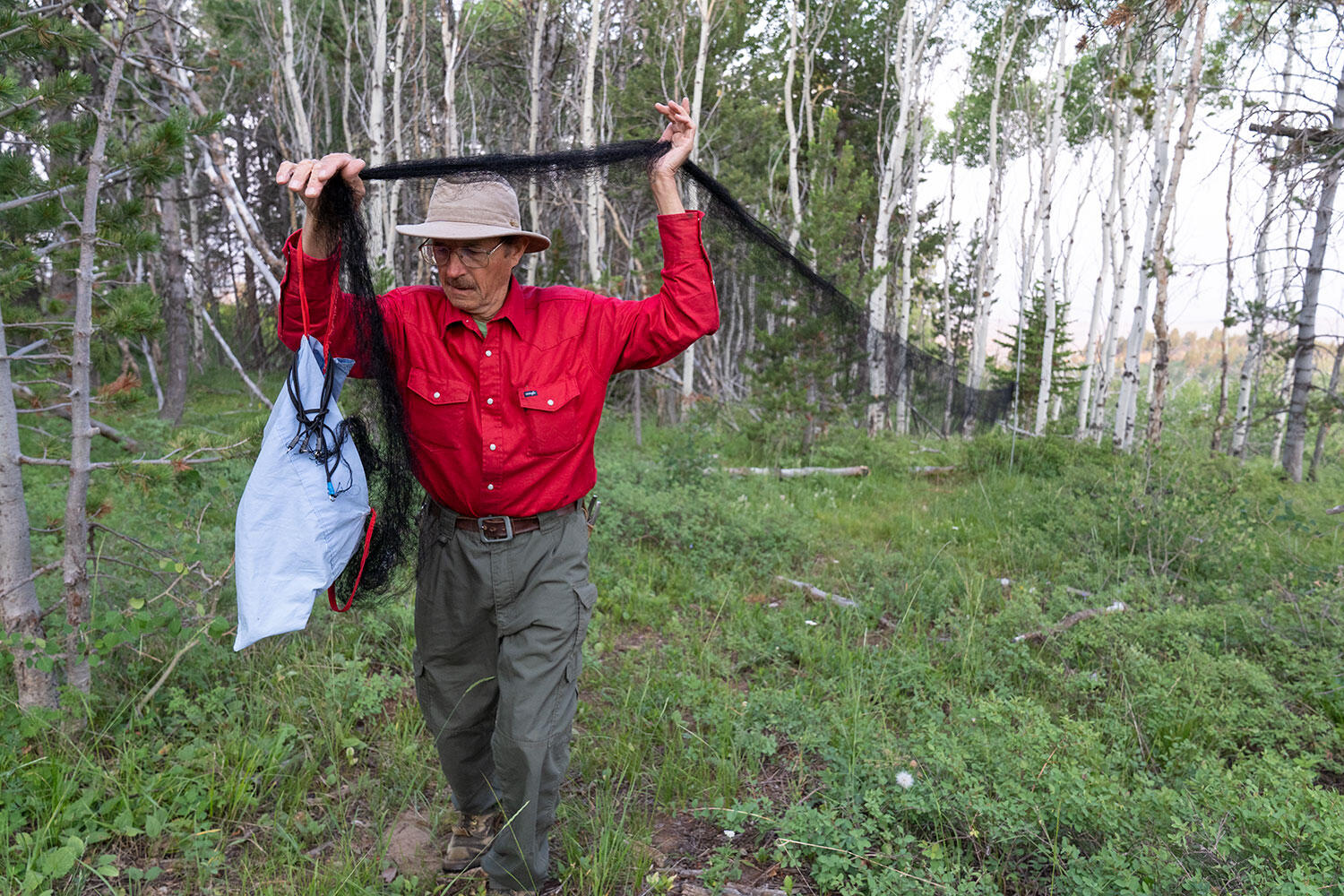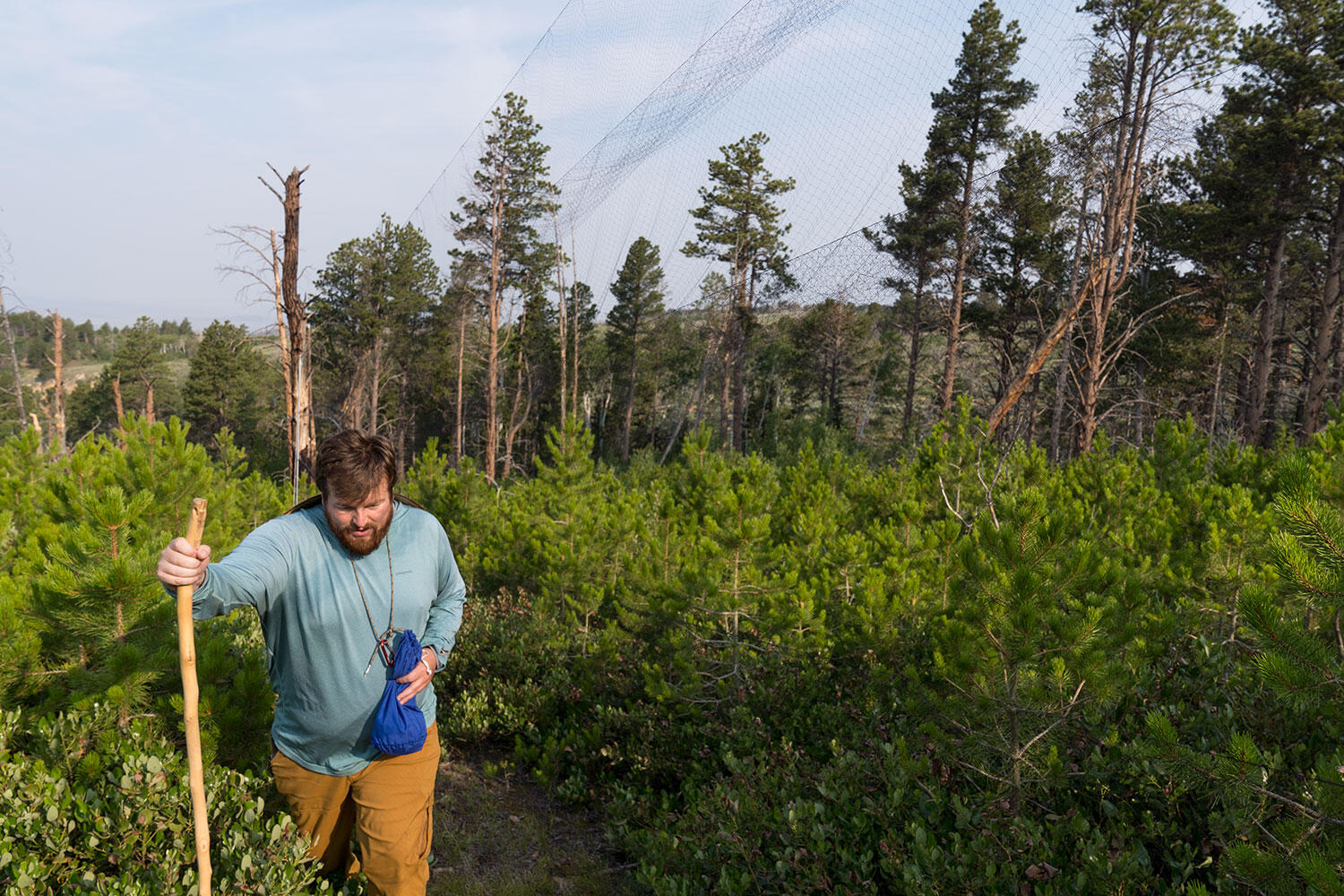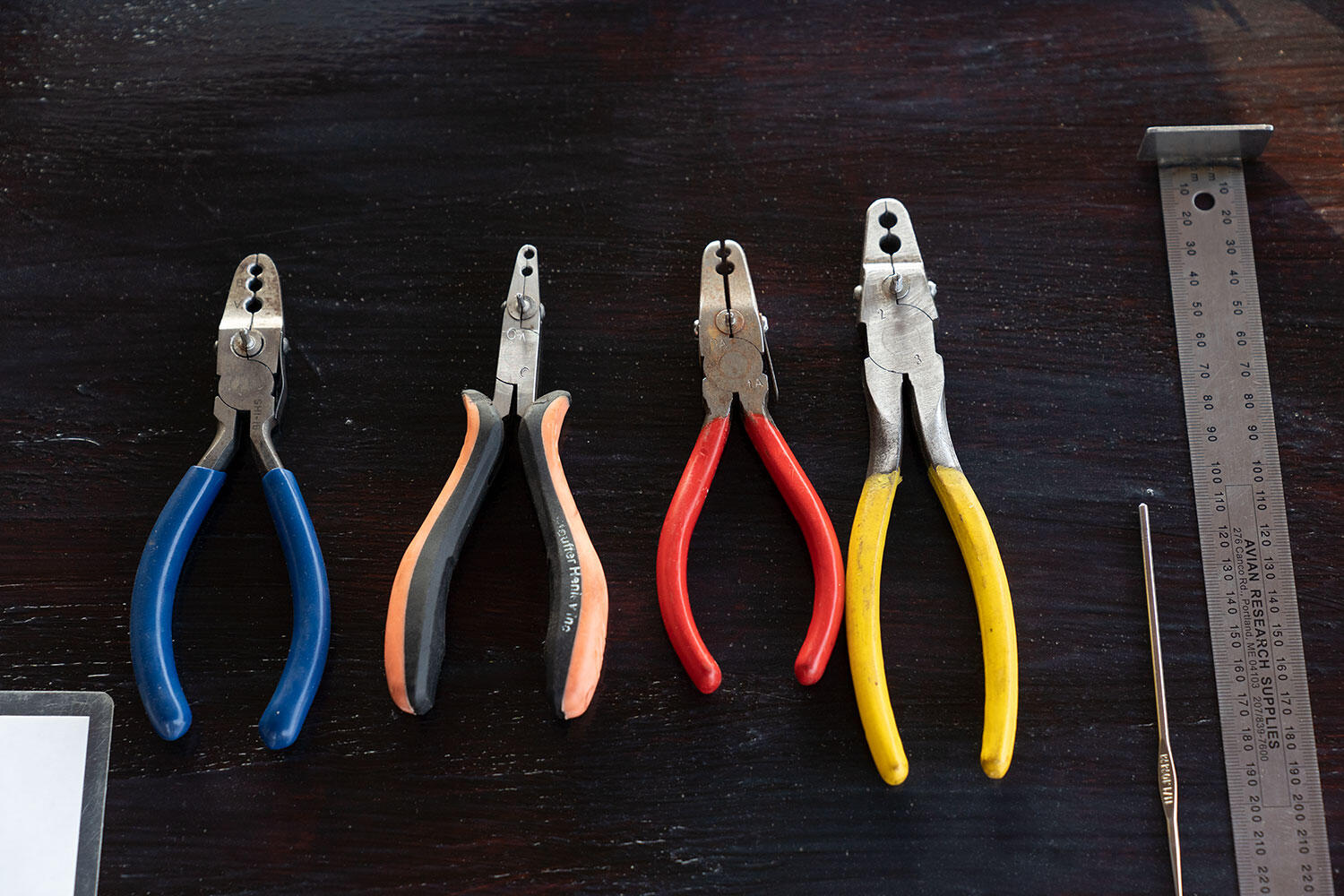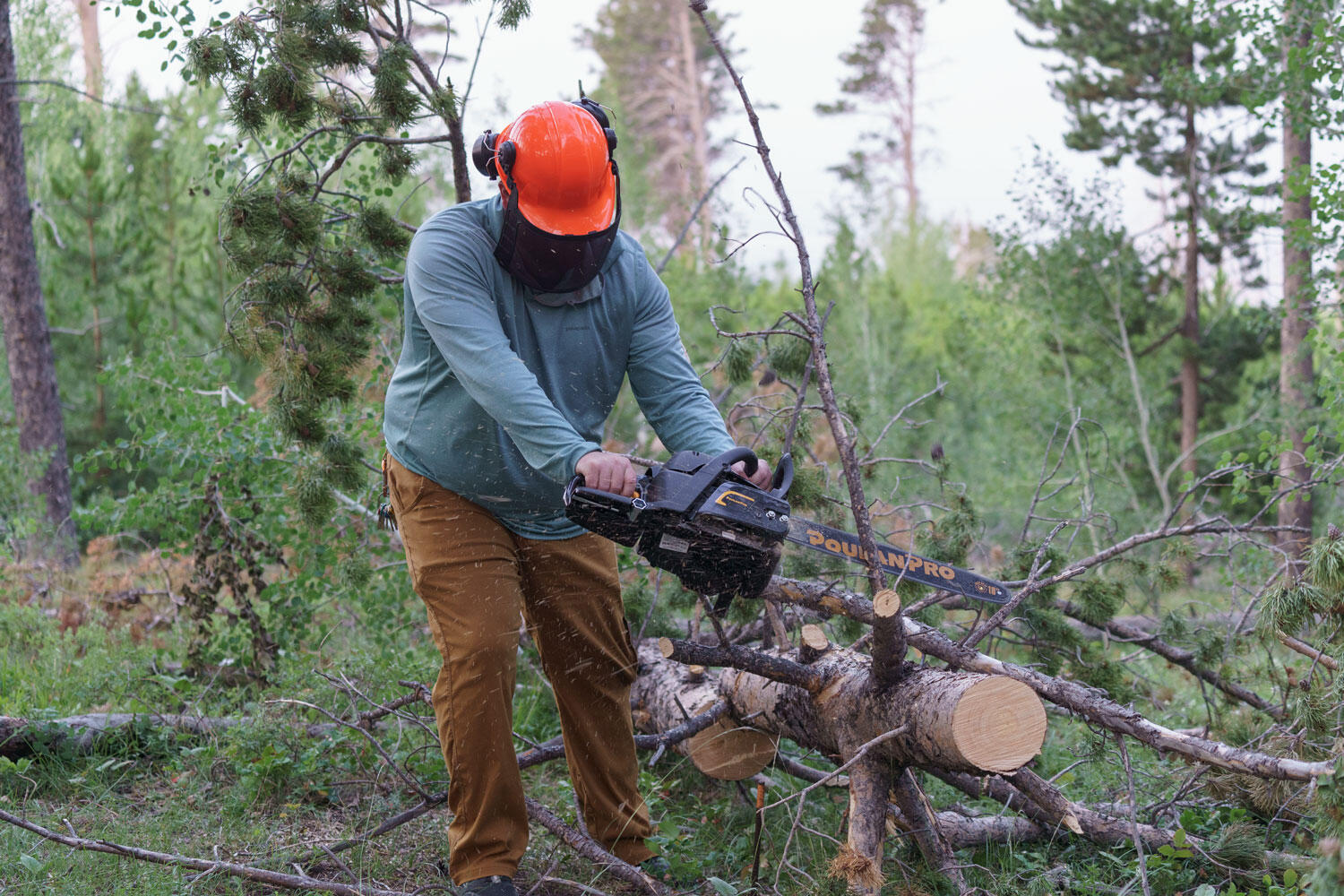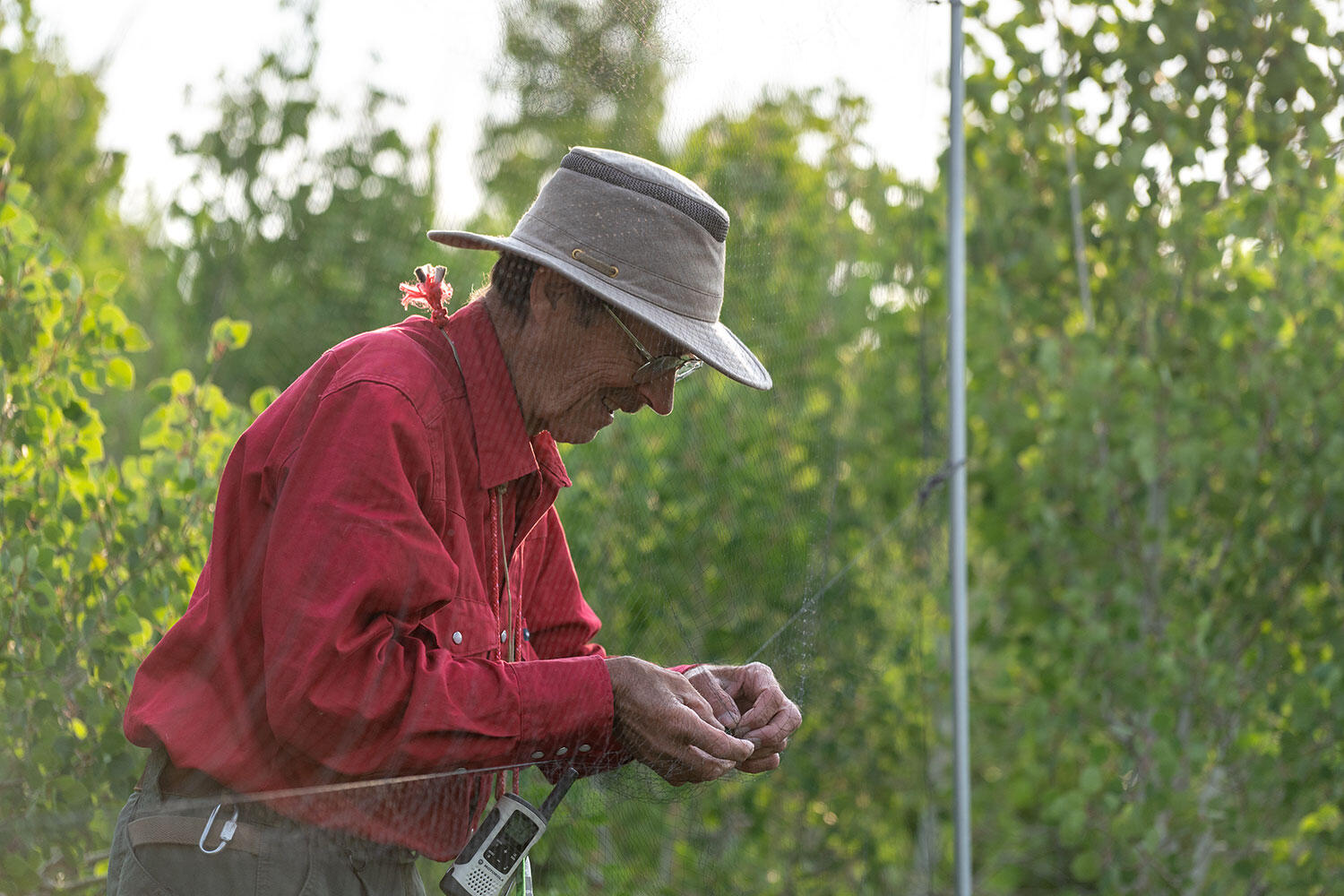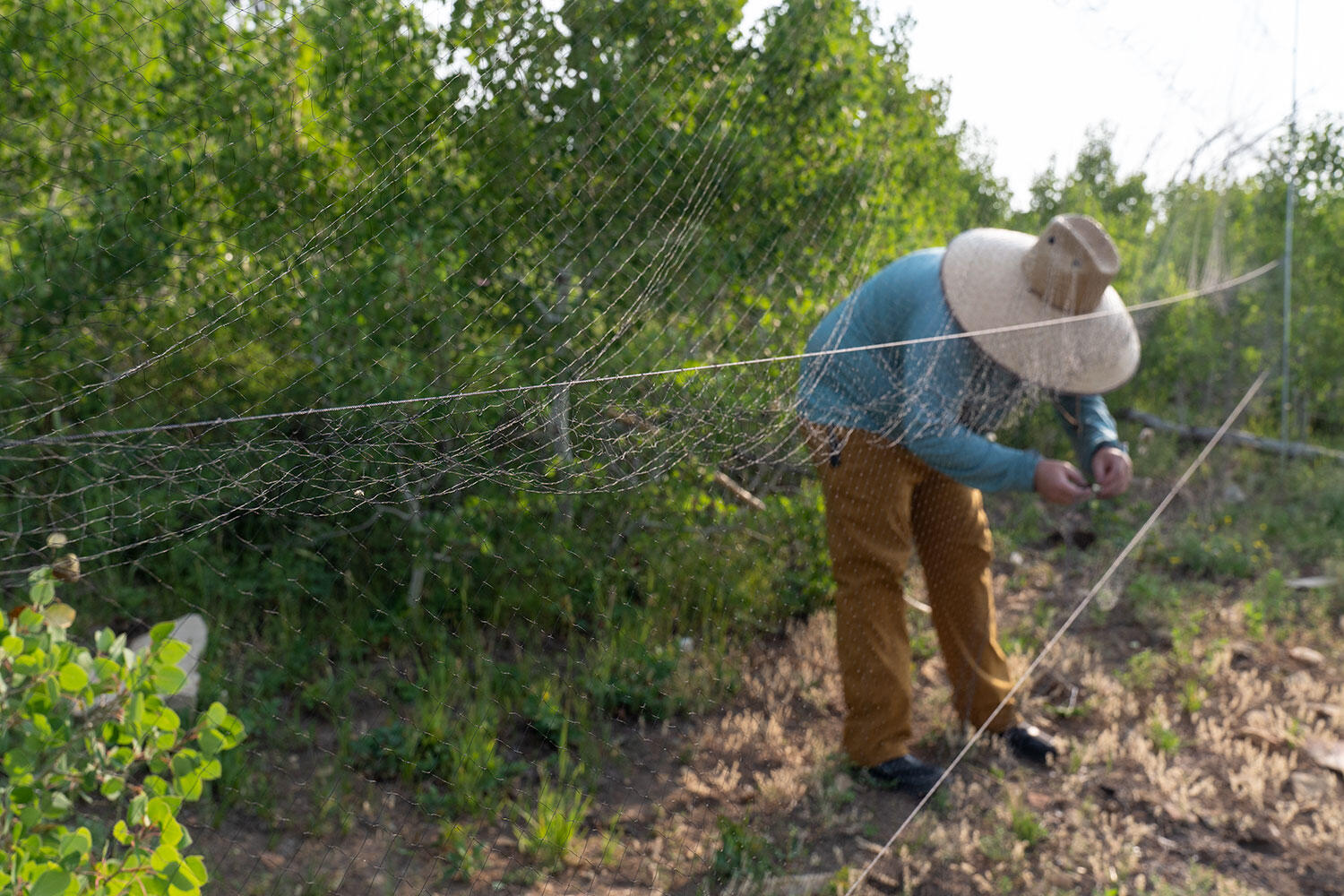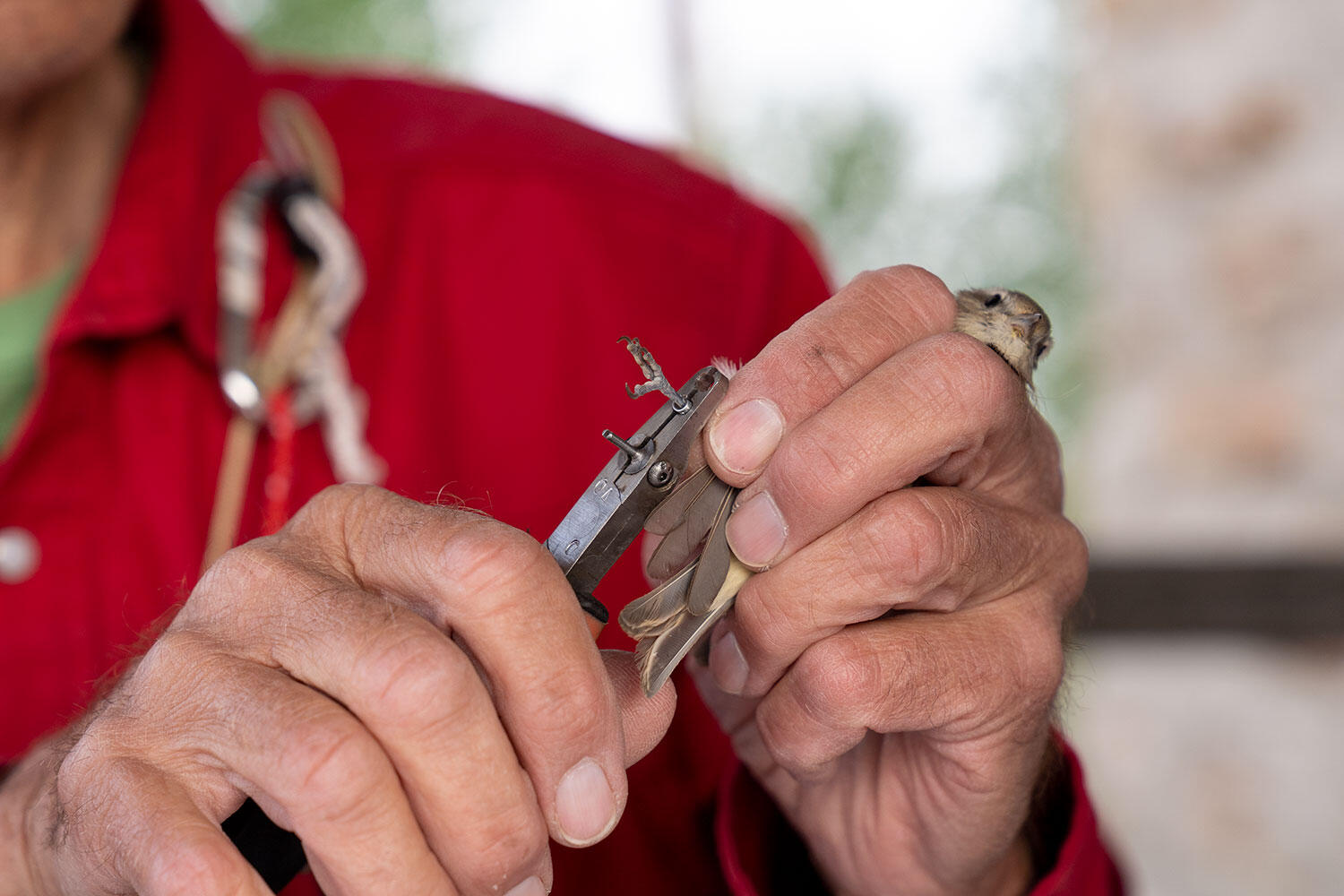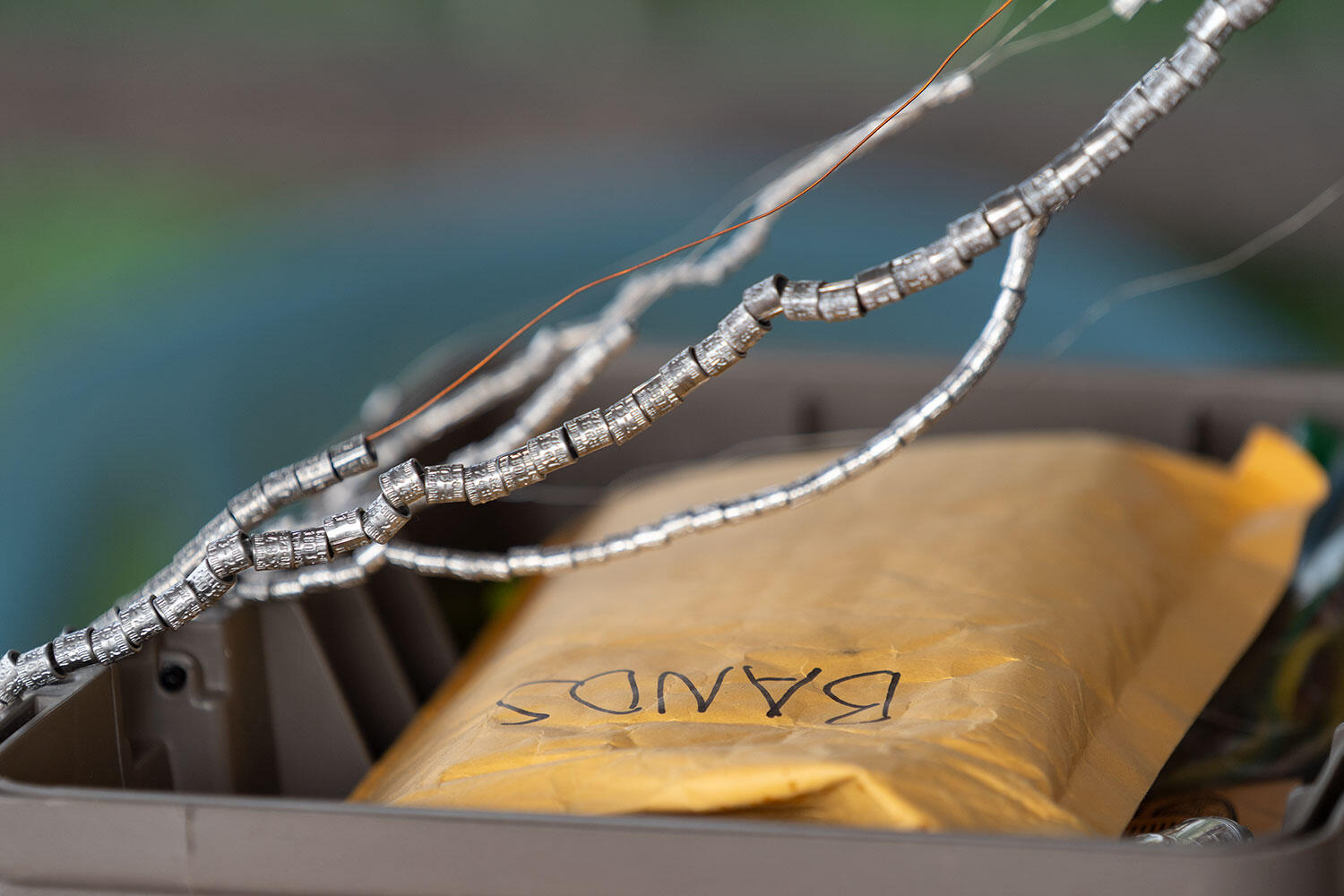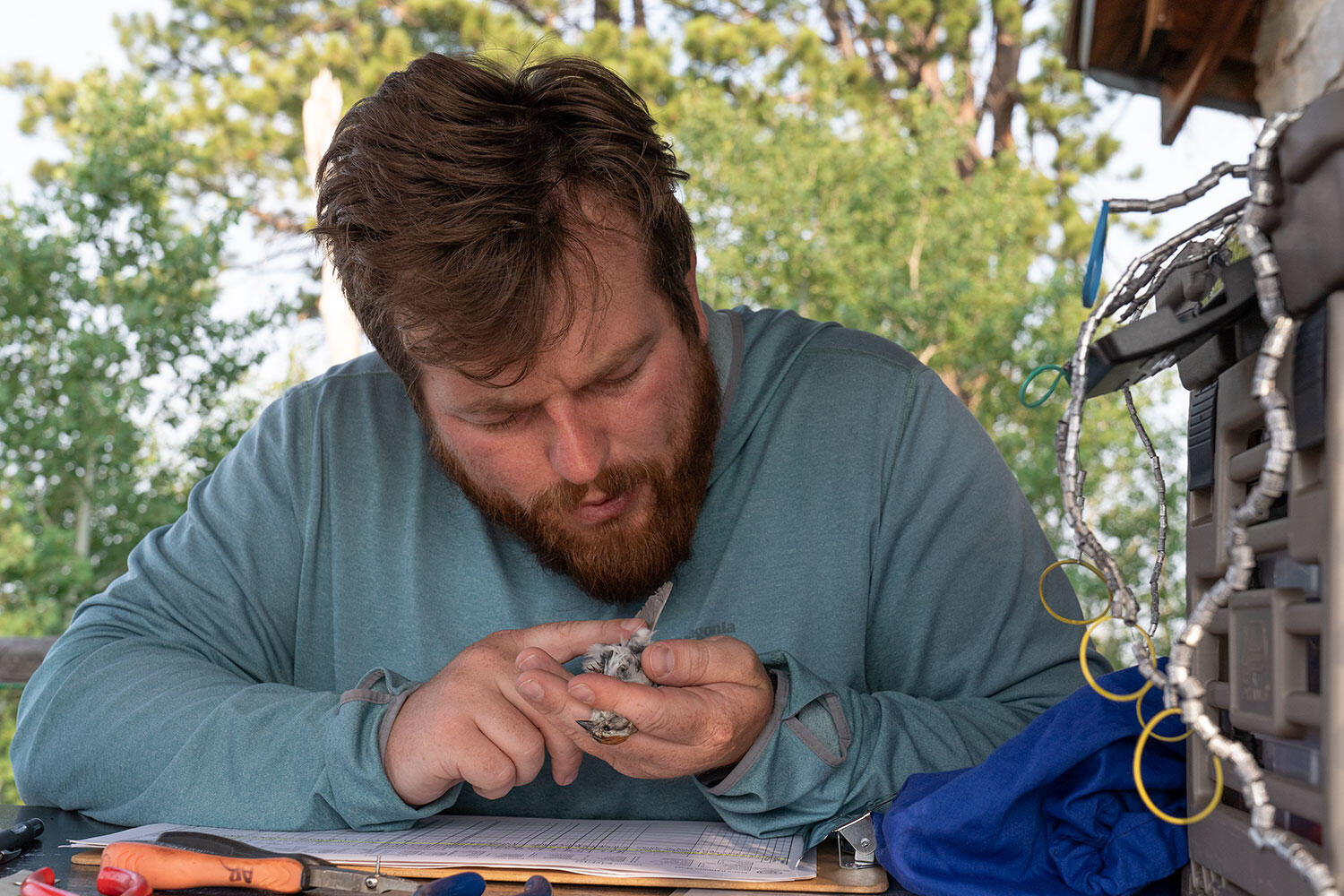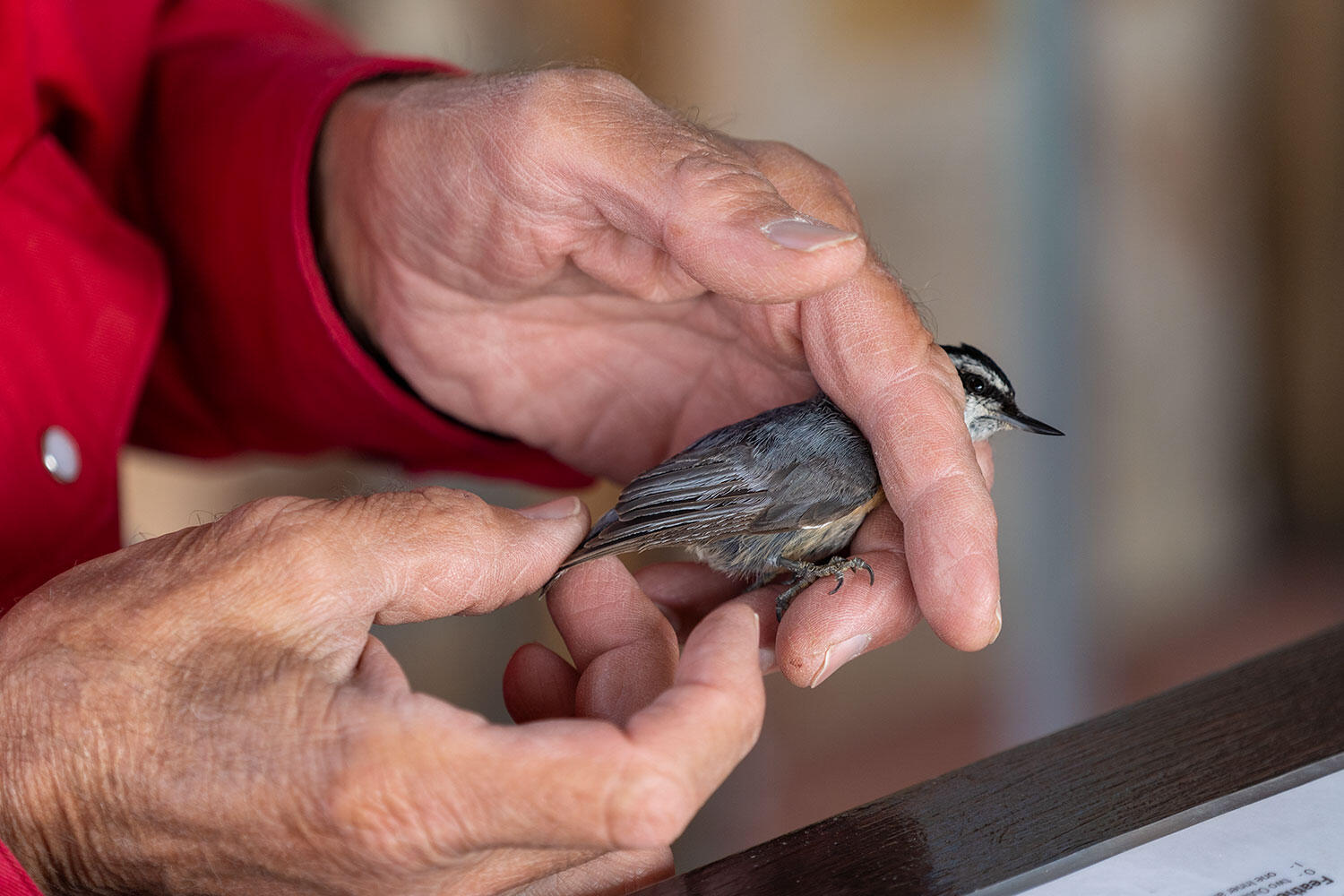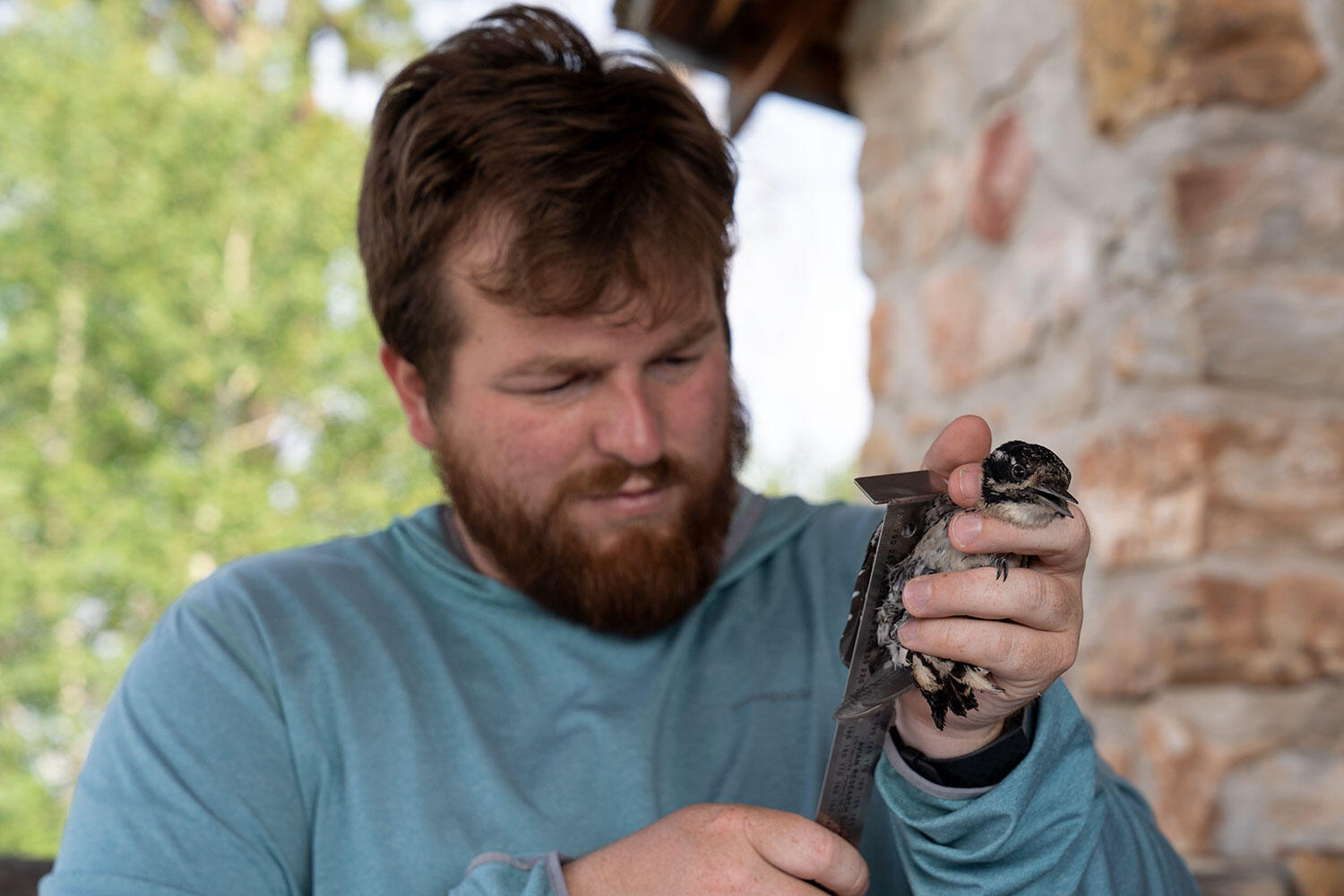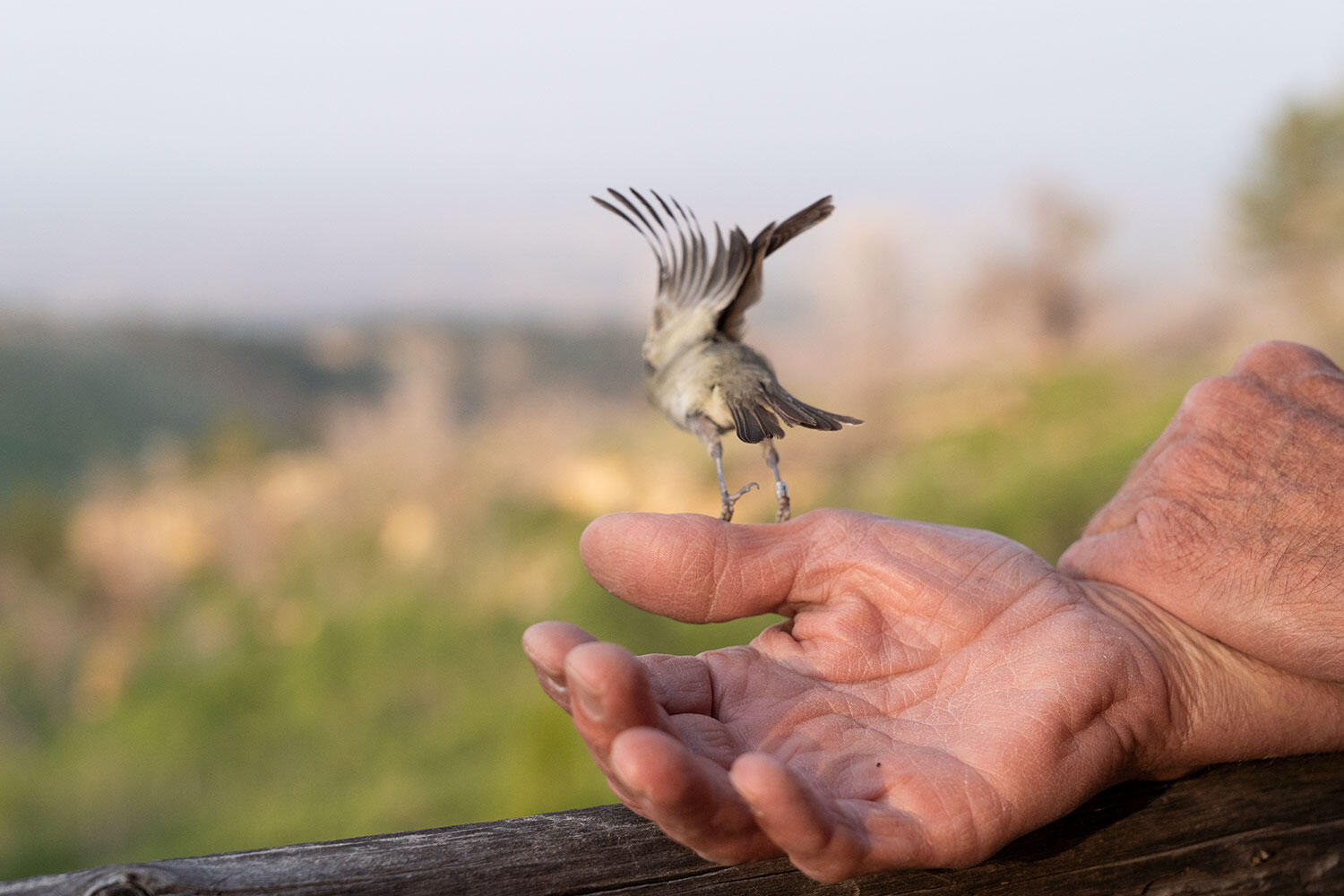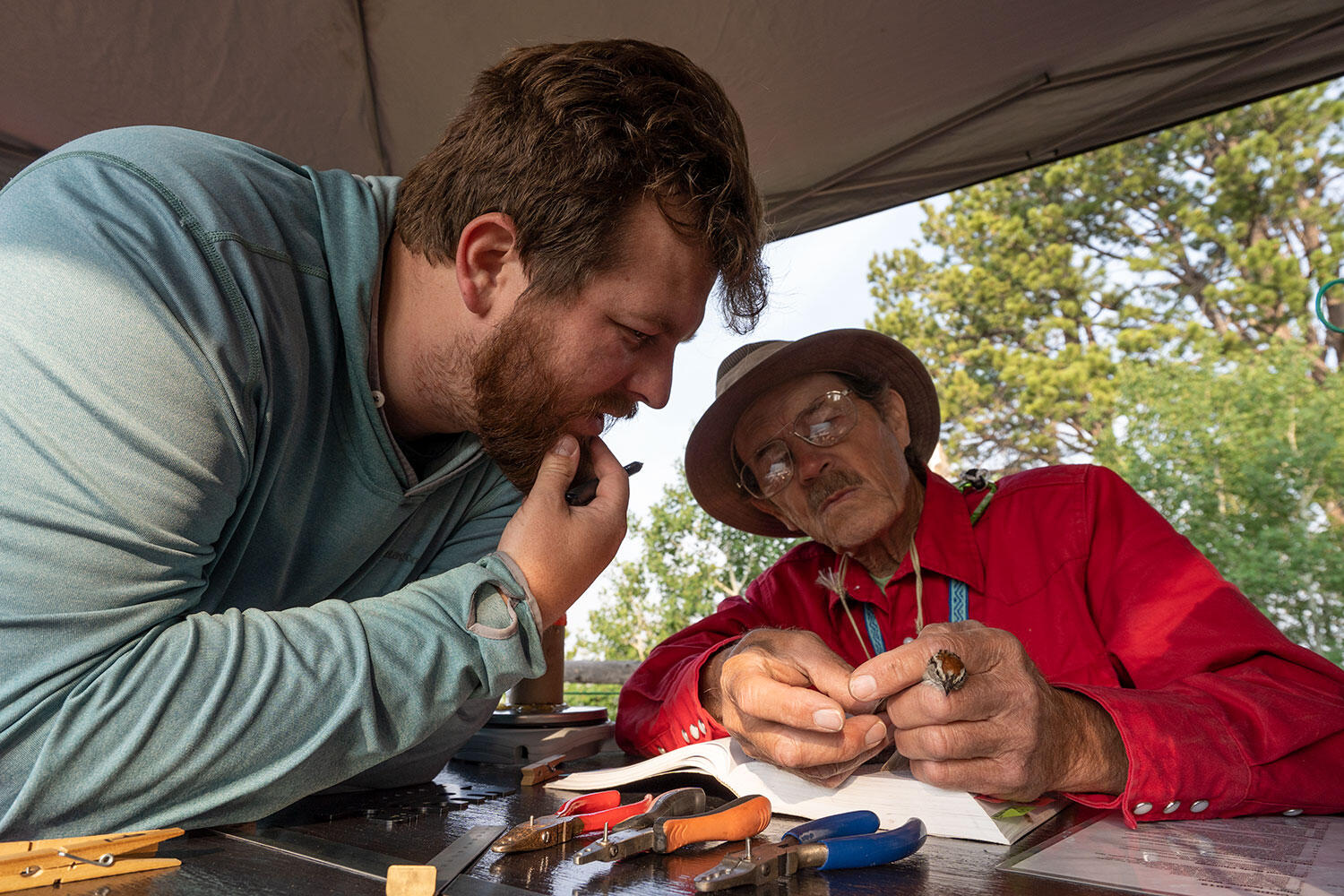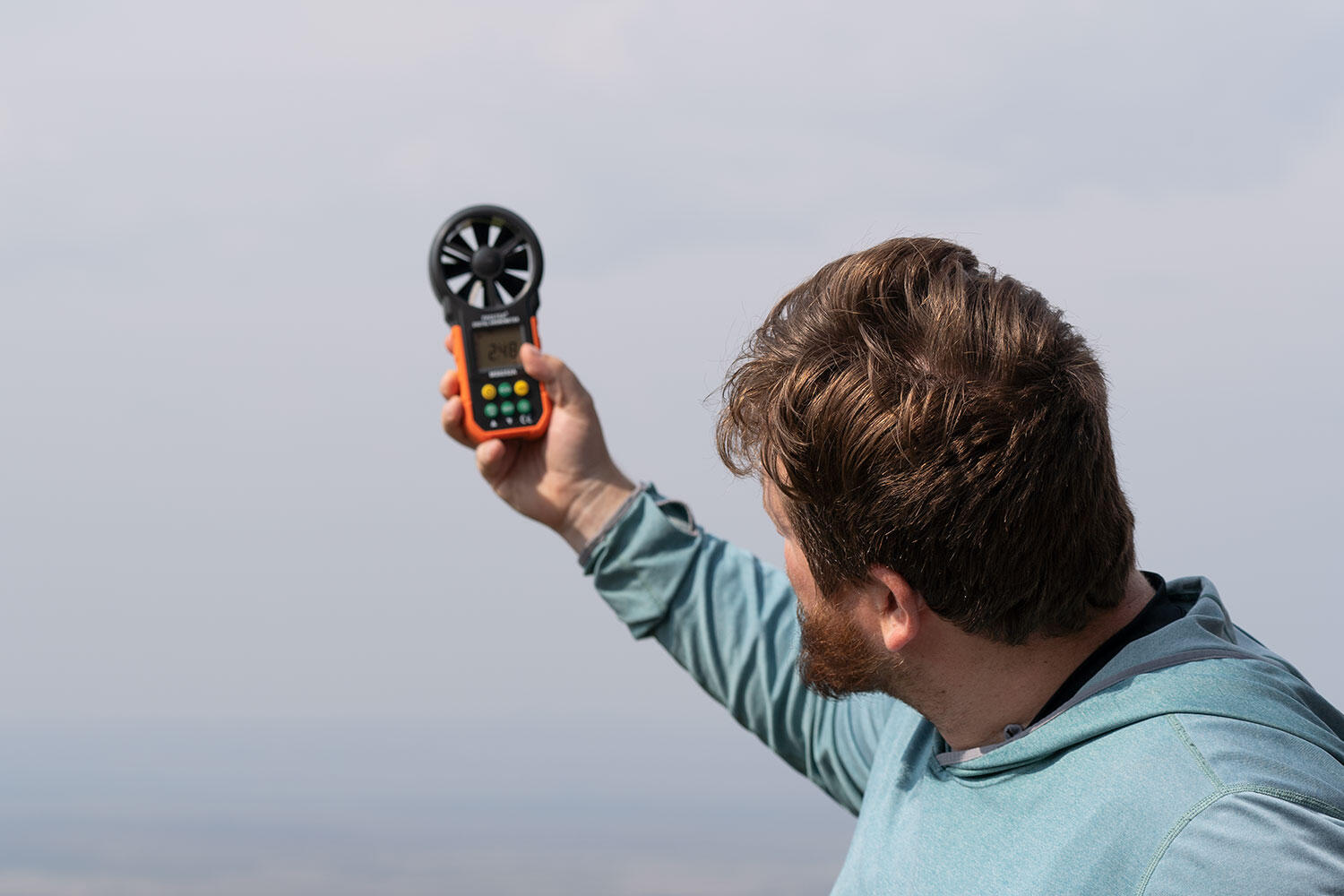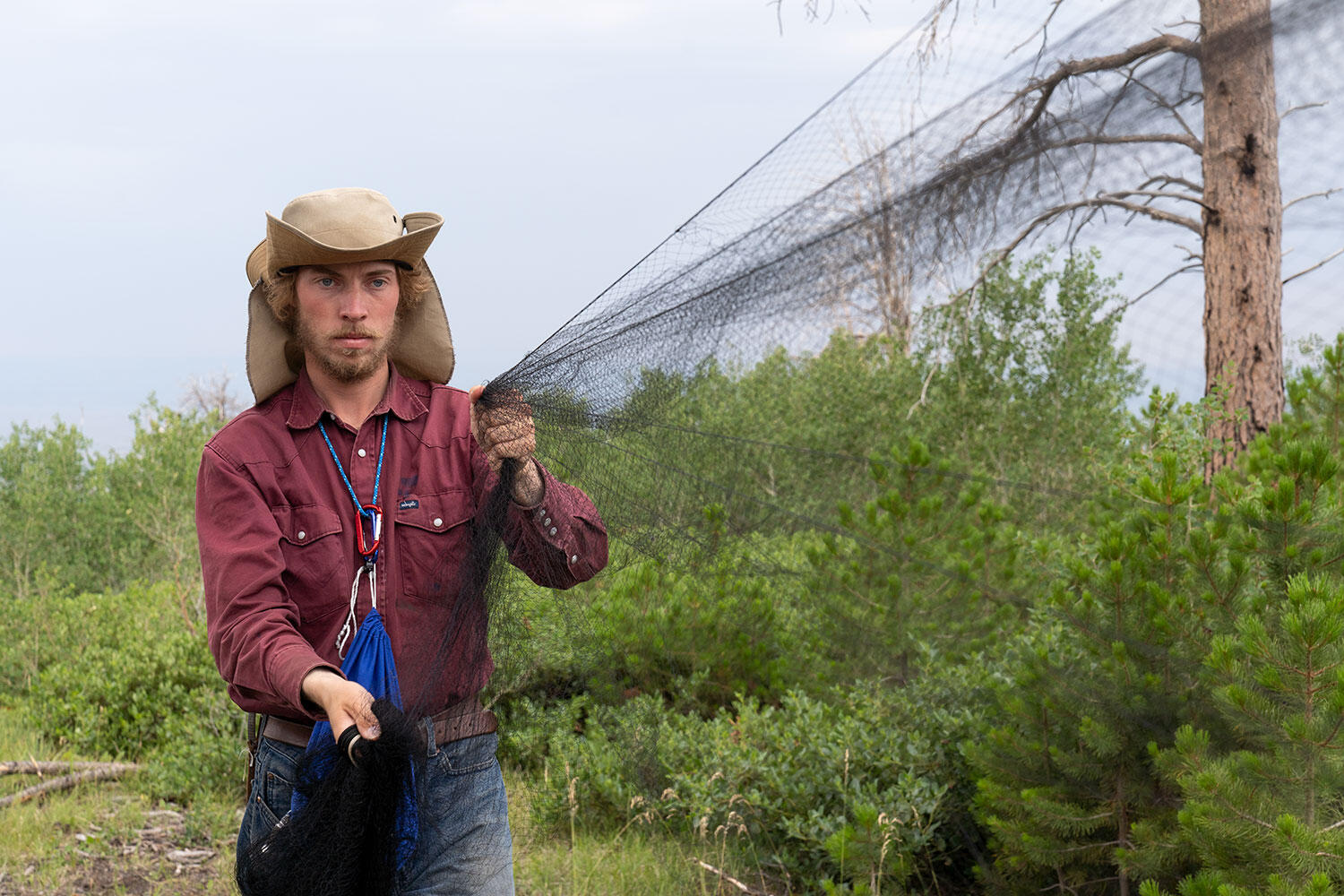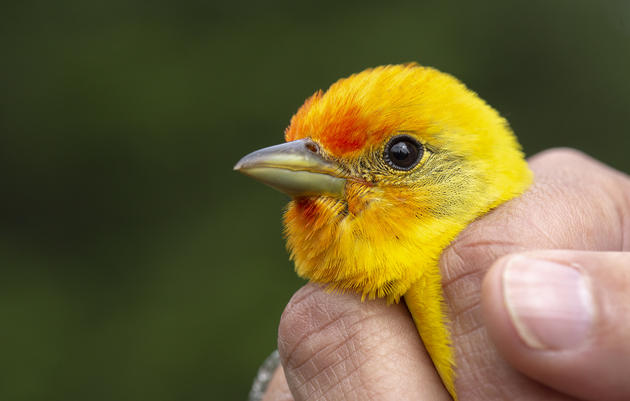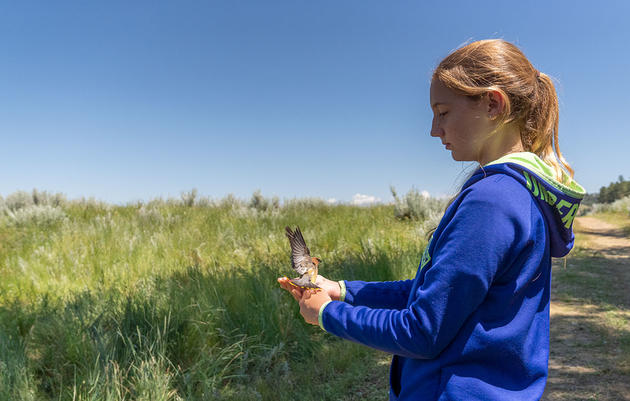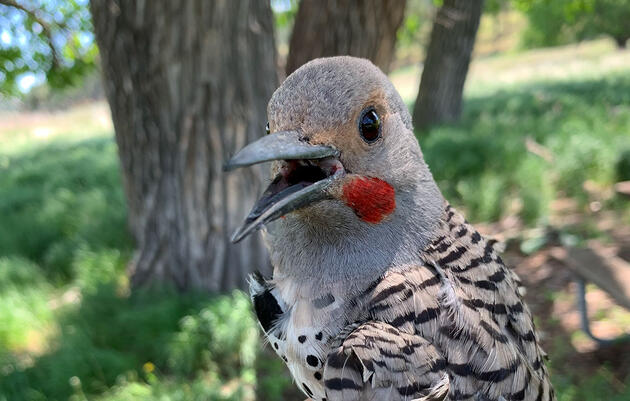Bird banding. Many people have heard of this widespread monitoring technique, few get to experience it. Consequently, there’s a lot of confusion around what exactly it is. We at Audubon Rockies have been banding birds in Wyoming for almost 20 years and we thought we’d give you a look behind the scenes.
What Is Bird Banding?
Bird banding is a tool used by researchers and conservationists to monitor and uncover the secret aspects of the life cycles of birds that can be crucial to protecting populations across the world. In a nutshell, it consists of capturing, measuring, and marking wild birds.
When there are so many other research methods, why is bird banding necessary? While surveying birds by sight and sound can provide valuable insight into the health of habitats and bird populations, it cannot provide the critical information on population movements, productivity, recruitment, and survival of individual bird species that banding does. This information helps scientists answer important questions, such as which life stages may be most limiting population growth or causing declines.
What Does Bird Banding Involve?
More than you probably think! Banding birds may be the goal of each banding day, but hundreds of hours of work are required for setting up, maintaining, and operating a bird banding station each season.
First, you have to select a site. Choosing a location for bird banding is fully dependent on the question(s) being asked by the researcher. If a single species is being targeted, banding is conducted in the habitat most appropriate for that species. If a habitat or location is being monitored, a station is often sited to sample an area while maximizing bird capture rates or the number of birds being captured per hour of net operation.
Then, there’s the setup process. Every banding morning begins before dawn with the setup and opening of the mist nets. The number of nets can vary depending on the study or monitoring project, but Audubon Rockies operates ten mist nets at each of our banding stations.
After staff and volunteers have opened nets, the group begins to set up the tools and resources needed to band birds and record the important data from each. A banding table is covered with multiple pliers, datasheets, bands, specialized tools, a scale, and a banding box, all organized to streamline the processing time for each bird and minimize the impact on its health.
Net Checks
When a bander or assistant sets up a mist net, they are creating a nearly invisible barrier that can capture creatures as small as bees to as large as Sharp-shinned Hawks. This wall of mesh safely captures birds during their daily movements, offering a soft holding place until the extraction team arrives. However, as discovered during the banding session in these photos, a larger bird, such as a Northern Goshawk, will quickly turn this soft, mesh wall into Swiss cheese in a single flap.
Every forty minutes, by the buzz of the banding watch, all extractors leave the station to check the mist nets for captured birds. These extractors are highly skilled and well-trained in the careful removal of each bird from its mesh hold. What does this training help do? It ensures the birds can be removed without injury in less than ten seconds in most instances. The occasional bird can offer a more complex puzzle, but experience and training offer quick solutions to these nylon riddles. After removal, the bird is placed in a dark, soft, cloth bag. Doing so helps keep the bird calm and minimizes stress. It is then carried back to the banding station.
Collecting Data
Once the bird arrives safely back to the banding station, it is kept in a cool, dark location until the bander is prepared to band and collect data.
Upon removing a bird from its bag, a bander identifies the species, measures the width of the tarsus (lower leg), selects and checks a precut band, and applies it with banding pliers. The band size and pliers are pre-measured to ensure a safe closure of the band on the bird. If the bird cannot be correctly identified, it cannot be banded because it is impossible to determine the correct band size without knowing the species.
After the band has been applied, the data collection begins. The bander records the bird’s sex, breeding condition, fat stores, feather condition, age, wing chord, and mass. This slew of characteristics indicates the health of individual birds and the trends in a population.
After recording mass, the bird is given one final check, photographed if needed, and released back to its routine. If all has happened accordingly, the bird will spend less than two minutes in hand—total. Yes, two minutes, or less.
Is Banding Safe for Birds?
Banders and banding assistants are highly trained individuals with multiple years of experience and training. Only proper, ethical, and safe treatment of birds is allowed in these procedures. The training is cross-checked with other experienced banders before federal permits are issued. Without these vetted permits, it is illegal to capture or handle wild birds.
This rigorous training regimen teaches all banders the unsafe conditions for capturing birds. High winds? Close nets. Rain? Close nets. High temperatures? Done for the day. These ethics keep all banders on the same ethics page and minimize any potential threats to birds during banding.
If nets can remain open during optimal banding conditions, the banding crew checks nets every forty minutes at a minimum. This standardized time is common practice among banders and allows for time to band birds between each net check without exposing birds in the net for too long.
Yes, bird banding is safe. How safe? 99.9 percent safe. If a bird banding station is operating in an unsafe or unethical manner, the people managing it can have their federal permits revoked. Migratory birds are legally protected, and bird banders must ensure the safest conditions for birds to follow the regulations set within their permits and the laws that protect birds.
Where Does the Data Go?
When we finish each bird banding season, the data recorded from approximately 1,000 birds is entered into two databases. First, we submit our data to the Institute for Bird Populations' (IBP) MAPSPROG database. This data is used as part of the Monitoring Avian Productivity and Survivorship (MAPS) program, operated by IBP in partnership with hundreds of banders across the Western Hemisphere. After submission to this long-term monitoring project, we submit the data to Bandit, a database operated by the United States Geological Survey. This database is available to public data requests and tracks all banded birds in the United States.
What happens to all this data from banded birds? It is used to understand and protect birds and the places they need. Sound familiar? That’s the mission of Audubon. Simply put, we cannot properly protect birds without bird banding.
A new Audubon initiative, the Migratory Bird Initiative, uses all the available banding data—including what Audubon Rockies staff and volunteers collect—to model the most critical habitats needed to conserve bird populations.

